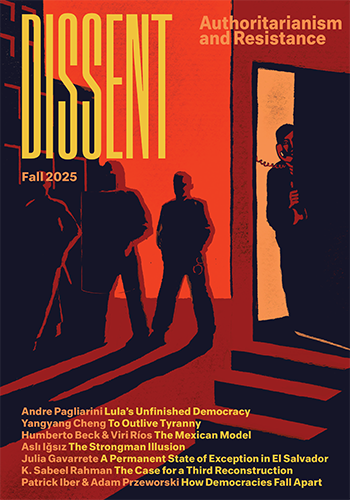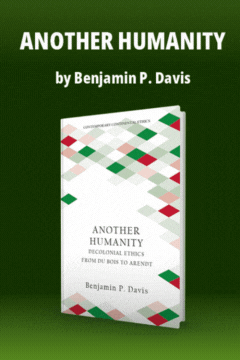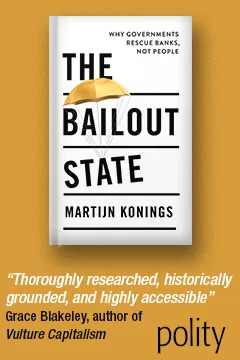Pat Sexton’s Legacy
Pat Sexton’s Legacy
Lois Spier Gray: Pat Sexton’s Legacy
Last week we posted a tribute by William Kornblum to Patricia Cayo Sexton, a member of the Dissent editorial board until her death earlier this month. Here we offer another tribute, by Lois S. Gray, the Jean McKelvey Alice Grant Professor of Labor Management Relations Emeritus at Cornell University.
Patricia Cayo Sexton (1924-2012) spent a lifetime advocating for workers and their unions, women, and people of color. Influenced by her early life in a household headed by a single mother who worked as a janitor and auto assembly line worker to support her family, Pat identified with the working poor. (Her mother?s struggle was the subject of an article Pat wrote for Harper?s in 1962.)
Pat acquired her formal education the hard way, by working while learning. At the University of Chicago, she joined a student chapter of the Socialist Party and met Norman Thomas, one of her inspirations for a life devoted to social change. After graduation, she found work on the assembly line at the Dodge-Main plant in Detroit and was elected shop steward by her mainly male coworkers. The UAW recruited her as a broadcaster for their radio programs, where she reached out to working women.
The UAW brought her in contact with her future husband, Brendan Sexton, who was Director of Education for the UAW and close associate of UAW president Walter Reuther. Brendan, who was described as a ?giant? in the U.S. labor education movement in the Labor Studies Journal, implemented Reuther?s idea of creating a resort and learning center designed for union families in Black Lake, Michigan. The Mae and Walter Reuther Family Center continues to provide the opportunity for UAW members to spend time learning and playing together. Pat was Brendan?s partner in this venture and, throughout her life, especially enjoyed spending time with other UAW members there.
A high-school dropout, Brendan was a self-educated intellectual and a radical critic of the American educational system, which he viewed as class-oriented, catering only to the elite and neglecting the working class. His views influenced the topic Pat selected to study for her doctoral dissertation at Wayne State University, which was published as her first book, Education and Income: Inequalities of Opportunity in our Public Schools. Her path-breaking research, which documented the inferior education provided to low-income students in America?s public schools, triggered a spate of other studies that led to a national political movement to revolutionize school funding.
Appointed to the faculty of the New York University department of sociology, Pat continued studying education and calling for reform. Her published books include The American School: A Sociological Analysis, Readings on the School in Society, School Policy and Issues in a Changing Society, and The Feminized Male, an analysis of the impact of feminized classrooms on male students. And with Brendan as coauthor, Pat wrote Blue Collars and Hard Hats: The Working Class and the Future of American Politics (1971) and Reaching Out: Helping Young People in Trouble (1975).
Pat?s research and publications had changing public policy as their goal, and were grounded in personal observations and associations with the subjects she chose to study. She was a great listener. For example, in the 1960s, when migration from Puerto Rico to New York City was at its height and most controversial, Pat moved to East Harlem to experience for herself the living conditions and learn the life stories of recent migrants. The resulting book was Spanish Harlem (1966), an in-depth analysis of the culture and impact of poverty, which received widespread attention when it was reviewed by Mayor John Lindsay on the front page of the New York Times Review of Books.
In keeping with her days as a factory worker and UAW shop steward and radio broadcaster, Pat also wrote books that advocated for women at work. She wrote about teachers in Women in Education (1978) and women working in the health-care industry in New Nightingales: Hospital Workers, Unions, New Women?s Issues (1982), a book developed with cooperation from the Coalition of Labor Union Women (a national organization of women union activists, formed to seek equality of opportunity at work and in their unions). Women and Work, her 1977 study of women?s status in the workplace, was commissioned by the United States Employment and Training Administration.
In her personal and professional life, Pat?s attachment to the labor movement never wavered. She marched on picket lines and joined UAW members in the Labor Day Parade in Detroit every year. In 1992, observing the declining membership and power of unions, including her own, she wrote The War on Labor and the Left. She tackled questions that have plagued scholars and observers of the American political scene: Why has the United States been more conservative in its economic and political policies than other Western democracies? Why is there no mass socialist or labor party here? What accounts for the decline of U.S. unions? As explanations of this American ?exceptionalism,” earlier writers cited such factors as the American frontier?s promise of opportunity and divisions in the labor force based on race and immigration. Pat pointed to employers and their uniquely virulent battle to suppress labor unions and left forces, abetted by local, state, and federal government in the United States. Her book documented this history and pointed to it as the central explanation for America?s conservative politics and employer-dominated labor-management relations.
Pat the successful academic and prolific writer never lost her activist orientation, serving on the board of the Democratic Socialist of America (where she was a close associate of Michael Harrington), the Workers Defense League, the Association for Union Democracy, and the editorial board of Dissent. Her curiosity about emerging movements for change encouraged her to travel to faraway places to see for herself what was happening in the world. She represented DSA at international conferences in Europe and South America and, on her vacation time, participated in peace marches across the Soviet Union and Ireland. She explored the continent of Africa and defied the U.S. boycott to visit Cuba, Vietnam, and Iran; she ventured to Southeast Asia, India, and Australia for adventure and to meet local groups.
Throughout her long and productive life, Pat Sexton wrote about a variety of subjects, reflecting changing times and issues, but she never lost her focus.
Pat Sexton was my friend for more than fifty years. We met through our husbands, who became comrades in the early history of the UAW, both elected local union presidents at a young age and brought together in the Reuther Caucus. Brendan joined Reuther?s national staff and Ed Gray, my husband, became UAW Regional Director and International Executive Board Member. Brendan and Ed shared viewpoints on the direction of the union. Pat and I discovered our own common interests?she, a sociology professor at NYU, and I, an economist and labor educator at Cornell University?s School of Industrial and Labor Relations. As frequent travel companions, we shared many great experiences. I will miss Pat?her intellectual challenge, her fierce determination to change the world, and her adventurous spirit?but I am confident that her ideas and spirit will live on through her publications, which continue to be available online, and through her many students, friends, and like-minded associates.






